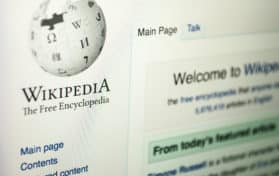
Teaching history with technology is a great way to help students learn history in an exciting, dynamic and collaborative manner. History educators have long known the benefits of teaching with technology, but these benefits have become even more critical in recent years.
The Use of Technology in Teaching History
Technology has become a large part of our daily lives, so when students are allowed to learn history through technology, they are being exposed to information that will impact their lives.
Technology is typically thought of as something used for entertainment, but it can be used to teach history. Teaching history with technology offers more than just entertainment, though. It provides interactivity and creativity.
There are many tools available at the click of a mouse that will allow students to learn about history in ways they never thought possible.
For example, if a student is assigned to write a research paper on the French Revolution, there are several free tools available online that can provide an interactive experience.
The use of technology in history education has increased dramatically over the past few years, so students need to be knowledgeable about these new technologies.
Technology can Increase Engagement
Digital technologies and tools are increasingly making their way into the classroom.
They provide engagement opportunities for learners and enhance teaching, learning, assessment, communication, and collaboration.
Technology-based activities can increase active student involvement in exploring historical topics.
Digital technology allows students to participate in simulations that create realistic experiences about historical events or circumstances.
Technology also provides access to rich multimedia resources, including documentaries, images, and audio files that allow students to gain a deeper understanding of historical events or concepts.
Technology can be used for Assessment
One of the main benefits of technology in education is that it provides assessment opportunities through its many interactive tools. By using technology, teachers can assess student progress and learning without relying solely on standardized testing.
Technology also provides access to new types of assessments that help determine how well students are applying what they have learned using technology.
For example, teacher created quizzes provide students with an assessment format that can easily be submitted and graded through a central learning management system.
Technology enhances the course-management systems that are increasingly being used in history education, allowing students to submit assignments digitally.
This allows instructors to monitor progress and provide feedback quickly by using automated tools like rubrics. This saves time for both teacher and students, allowing them to focus on more in-depth learning.
Technology is Used for Problem Solving
History is about solving problems.
For example, when studying the French Revolution, it helps students significantly understand what was happening in France prior to the revolution so they can better understand why there was social unrest.
Technology can create interactive timelines that easily show how events were related and which gave rise to the other. Timelines provide students with opportunities for critical thinking and problem solving as they compare and contrast historical events.
Teaching history through technology helps students develop research skills that will help them not only in their studies but also in their future careers.
Technology can Encourage Creativity
Another way that teaching history with technology enhances students’ learning experience is through encouraging creativity.
Interactive tools, apps, and simulations create opportunities for active learning, allowing the student to explore historical topics in ways that promote higher-order thinking skills, creativity, and innovation.
The use of technology to enhance creative thinking is especially prevalent in the field of art history.
For example, students can create digital collages that combine images to allow them to creatively think about what was happening during a specific time period or event.
Incorporating Technology into the Classroom
Technology enhances learning by providing access to reliable, up-to-date information on topics ranging from ancient civilizations to modern history.
It also provides students with interactive tools, simulations, and assessments that help improve their critical thinking skills.
These learning opportunities can be incorporated into online and traditional classrooms to enhance students’ educational experience. Learning how to use technology in the classroom effectively is part of any educator’s role today.
Tools that History Teachers can Use
There are many types of tools that teachers can use to teach history in the classroom.
Some of the most popular are listed below.
These tools can be used with students both in online or traditional classrooms, depending on what works best for the teacher and their specific class needs.
The interactive Timeline
An interactive timeline is one of the best tools to use in teaching history with technology.
It allows students to click on different events to read about them, providing more information without relying solely on a textbook or PowerPoint lecture.
Digital Simulations
Simulations bring history to life for students by allowing them to role-play important historical figures.
These interactive tools allow students to think critically about how their choices will affect the outcome of a specific historical event.
Simulations also promote teamwork, as students must combine their skills and knowledge to complete tasks successfully.
This requires collaboration with classmates which can lead to key discussions during class time.
Classroom Collaboration Tools
Classroom collaboration tools, like VoiceThread, allow students to create presentations together.
This is a great tool for allowing students to display their understanding of history by creating multimedia presentations that can be easily shared with classmates or uploaded for grading purposes.
Key Takeaways
Allowing students to act as historians through technology enhances their learning experience by helping them develop critical thinking skills.
These tools allow history teachers to integrate creativity into the classroom and encourage teamwork among students.
Technology also provides opportunities for collaboration with classmates through sharing presentations, creating interactive timelines, or participating in digital simulations.





